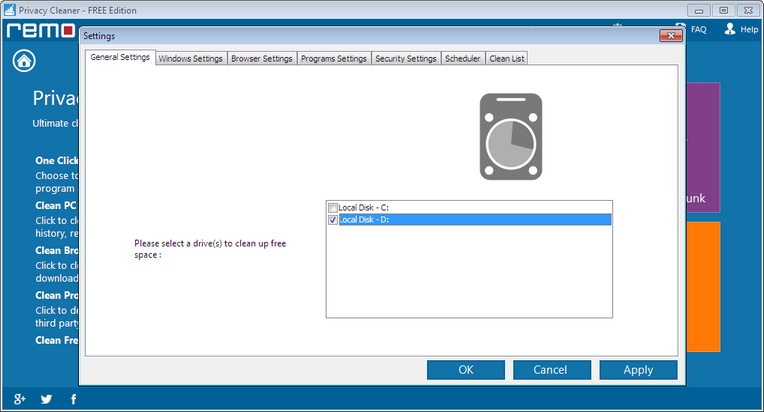

- Itunes cache and remo more how to#
- Itunes cache and remo more full#
- Itunes cache and remo more free#
- Itunes cache and remo more mac#
- Itunes cache and remo more windows#
The Mac is powerful, and secure however, it has limited SSD storage capacity.

Itunes cache and remo more free#
We often empty the Trash or delete files and folders to free some SSD storage space.Application caches are used by both native and third-party 0 If you’re struggling with a crashing Mac app or just trying to clean-up the remnants of an uninstalled program, deleting application caches can be a good place to start. That’s why cache files take up a significant part of your hard disk drive and it leads to the slowing of your Mac Surfing the Internet of course ends up giving a lot of cache files, which need or should Although cache files are actually temporary and they can be deleted, most people forget to actually remove them. Deleting the Web Cache (In Safari): If you’re a Mac user, it is entirely possible that Safari is your default browser. The only way around it is to untick both the application DXO and It looks like CCleaner does not recognise the size of the DXOPhotolab2 cache, but knows it is one file. This can happen for many different reasons, if it does however you can try clearing the Calendar app’s cache to If I run CCleaner then the DXOPhotolab2 cache is deleted. Sometimes your calendar events may stop syncing, or other calendar data may not be updating properly on your Mac.
Itunes cache and remo more how to#
Here’s how to clear app cache on iPhone using dr.fone. You can use it with every leading iPhone model like iPhone XR, XS, XS Max, X, 8, 8 Plus, and so on.
Itunes cache and remo more windows#
Surfing the Internet of course ends up giving a lot of cache files, which need or should, The tool is extremely easy to use and runs on both Windows and Mac.

3 Ways to Recover Accidentally Deleted Files in OS X * The cache files are rotated (cleaned) regularly by the UNIX foundation. * There are several companies that sell utilities to “clean” a Mac but for 99.9% of users it is not needed 99.9% of the time. But what about applications that don’t have shortcuts, built-in system apps, and, * There is no need to do this in macOS. Uninstalling an app on a Mac is so easy, you might not even realize how to do it: just drag the app’s icon from the Applications folder into the trash. How to Clear Cache on Mac GetAppSolution. Wow.Application cache on mac can it be deleted Recover SSD Storage on Mac and Deleted Files (if any) I see that one user on Apple’s support forums reported that his cache ballooned to 17 GB, leaving him with only 100 MB disk space. There’s no option to choose how much space iTunes can use for its cache. I’m curious how big is your cache folder? iTunes and the Music certainly check how much free space is on the disk it uses, so it shouldn’t let the folder get too big, but I wouldn’t be surprised that, if you use Apple Music a lot, it could take up several GB. Wait a couple of minutes, then turn it on again. To clear the cache on iOS, go to Settings > Music, and toggle off iCloud Music Library (or Sync Library, on iOS 13). Quit and re-launch iTunes so it sees that the folder is missing and recreates it. If you need to reclaim space, you could delete the entire folder, if you wish. I don’t know how much iTunes will hold on to, but conceivably this folder could get a lot bigger. Right now, I haven’t been using Apple Music a lot, and my folder is about 740 MB. The artwork folder seems larger than it should be it contains artwork cached from the For You section, as well as for music I’ve streamed. The SubscriptionPla圜ache is the folder that contains the actual music files, and fsCachedData contains album artwork. On Windows, it’s (replace USERNAME with you user name):Ĭ:\Users\USERNAME\AppData\Local\Apple Computer\iTunes\
Itunes cache and remo more full#
(The full path is ~/Library/Caches/.) If you’re running macOS Catalina, and using the Music app, then the path is ~/Library/Caches/ You’ll see something like this: Once you’re there, go to the Caches folder, then. If you haven’t un-hidden that folder, you can view it in the Finder by pressing the Option key, and choosing Library from the Go menu. On Macs, iTunes and Music stores caches in the hidden Library folder that’s inside your home folder (the one with the house icon and your user name). Second, it probably holds onto the files so, if you play them again, it can play them more efficiently. First, it’s not streaming “live ” it downloads the entire track you’re listening to, and plays it. When you stream music using Apple Music, iTunes and the Music app cache files on your computer.


 0 kommentar(er)
0 kommentar(er)
